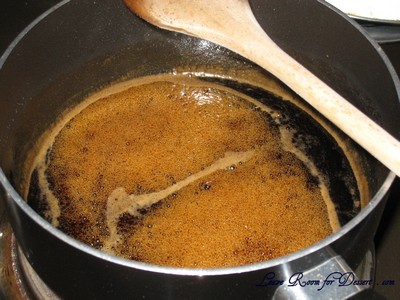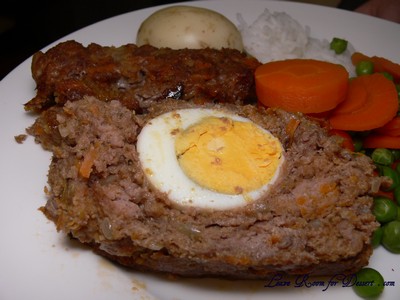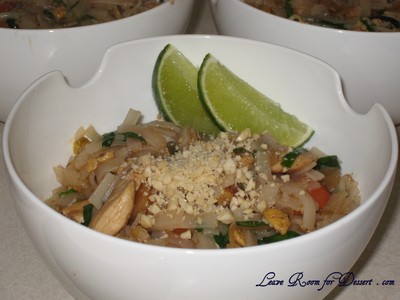
When I heard we were having “Gwomkes” or “Gwonkys” I was intrigued, as I had no idea what it was. I tried searching for it on the internet, although it’s not spelled the way it’s pronounced. It was actually Golabki (pronounced ga-WUMP-kee), a traditional Polish minced cabbage roll made from meat wrapped in lightly boiled cabbage leaves.
I was very happy to hear we would be making Polish food, as I haven’t tried much at all, even with it being a part of my heritage (if you have any Polish recipes or cookbooks you’d recommend, please send them through to me, as I’d love to explore Polish food more).
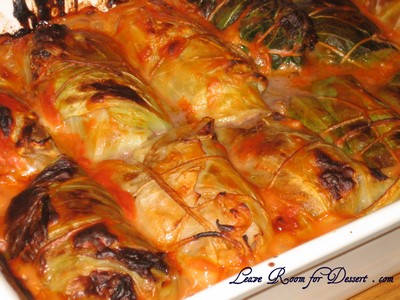
Overall, everyone loved the golabki’s. They tasted great, no complaints on that front. They did mess up a lot of dishes, but a lot of good food does. I’d love to make them again, this time boiling the cabbage whole, as we took off the leaves individually and they tore a bit. Also, making it for fewer people would lower the hassle of this dish. Another cooking class done… we’ve stopped them for quite a while now, with New Years, holidays and everything getting in the way. Maybe we can pick them back up again…

Golabki – Minced Cabbage Rolls
also spelled: Golumkies and Golumpkis
Recipe by my Dad with inspiration from my Babcia’s recipe.
Serves: 10 or more
2 kg finely minced beef
0.25 kg sausage mince
1 cup of cooked white rice
2 eggs
1 mid-size white onion finely chopped
White cooking cotton and/or tooth picks
12 to 14 cabbage leaves (possibly double depending upon size – we used a full cabbage)
Salt & Pepper
1 tablespoon butter
2 tins of tomato puree
80g butter
500ml full cream milk
½ cup plain flour
Cook the rice using the absorption method (Heat 1 teaspoon of butter in a saucepan on high. Add 1 cup rice and stir. Add 1.5 cups boiling water. Reduce heat to low and cook for 20 minutes).
As the rice is cooking, boil at least 3 litres of water.
Mix both meats together with the onion and egg. Add salt & pepper to taste. When the rice is cooked, add it to the meat mixture and mix it through.
Take 12 cabbage leaves and remove the core from each leaf. (Depending upon the size of the leaf then double the amount of leaves may be required and then they would be doubled up in the making of the rolls). We found out afterwards, it would be much easier to cut the core from the cabbage and boil the entire thing. This will make the leaves come away a lot easier, as our ones broke quite easily.
When the water is boiling, add a teaspoon of salt to the water. Place each of the cabbage leaves in the 3 litres of boiling water to blanch them. After approximately 3 minutes, take each leaf out of the boiling water. Shake off the excess water and place the cabbage leaf on a cutting board.
Take the meat mixture and spoon an adequate amount (a tablespoon or two) onto the cabbage leaf.
Fold the cabbage leaf onto itself, forming a tight roll. Use the cooking cotton to tie-up the roll so it won’t unravel.
Note: To secure the roll, the cotton tie may have to be tied around the ends as well as the sides of each roll. (If one wishes, a toothpick can be used to secure the roll.)
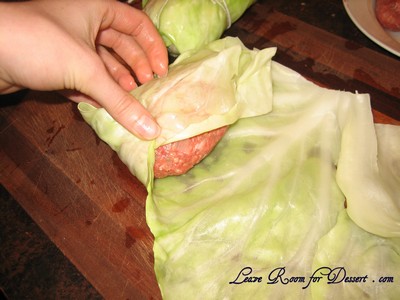

Turn on the oven and set the temperature to 180C.
Add a tablespoon of butter (or more) to a frying pan on medium heat and melt the butter. Place each roll into the frying pan, turning so that all sides are lightly browned.

To prepare the sauce, melt 80g butter over medium heat, add the flour and cook for a few minutes, add the milk and whisk until smooth. Whisk in the tomato puree.
As each roll is browned place it into a casserole dish. Pour the sauce over the rolls.


Place the casserole dish into a moderate oven (180C) and cook for 40 minutes. After approximately 20 minutes, take out the casserole dish and turn each roll over. Continue cooking for the remainder of the 40 minutes.
Prepare a side dish of mashed potatoes, carrots and peas/beans to suit.
After the second 20 minutes, remove casserole dish and take each roll and place it on a plate. Add the side dishes. Spoon out the sauce from the casserole dish, covering the rolls and side dishes to taste.
Serve it and enjoy it.












